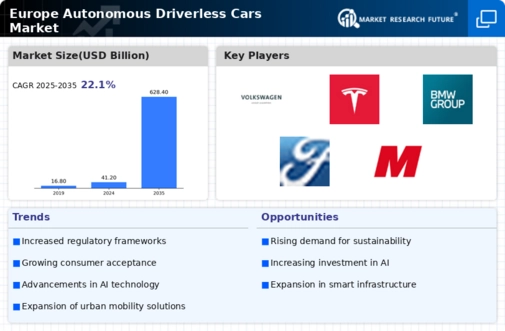Convergence of Machine Learning (ML) and Artificial Intelligence (AI) Technologies are driving the market growth.
The convergence of machine learning (ML) and artificial intelligence (AI) technologies constitutes a noteworthy development that is influencing the market for autonomous driverless vehicles in the European Union. With the increasing prevalence of autonomous vehicles, AI and ML are integral components in improving their functionalities, safety, and overall efficiency. Algorithms that utilize AI and ML are essential constituents of autonomous driving systems, as they empower vehicles to perceive and interpret their immediate environs, execute decisions in real-time, and traverse intricate terrains.
These technologies perform ongoing data analysis from a variety of sensors, including LiDAR, radar, cameras, and GPS, in order to detect potential hazards, comprehend road conditions, and identify obstacles.
An important domain in which AI and ML are advancing is the enhancement of object classification and recognition. Sophisticated algorithms possess the capability to precisely detect automobiles, cyclists, pedestrians, traffic signs, and road indicators. This enables autonomous vehicles to respond suitably and guarantee secure navigation. By means of iterative learning, these systems consistently enhance their functionalities, thereby adjusting to a wide range of driving scenarios and dynamic circumstances. The growth of Mobility-as-a-Service (MaaS) solutions is a pivotal development influencing the market for autonomous driverless vehicles in the European Union.
MaaS is transforming urban transportation by integrating and delivering mobility services on demand, including car-sharing, public transit, ride-hailing, and bike-sharing, all via a single platform or application. This provides convenient, integrated, and on-demand mobility services. Potentially transforming MaaS, autonomous vehicles will present novel opportunities for streamlined and effective urban mobility. By integrating MaaS platforms with AI-powered autonomous driving technology, transportation providers can provide commuters with individualized and adaptable mobility solutions that are specifically designed to meet their requirements and preferences.
















Leave a Comment